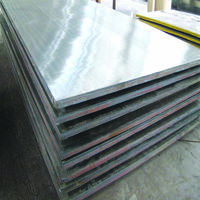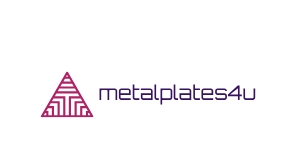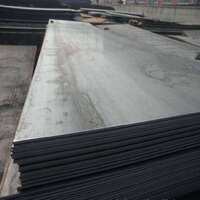1. Introduction
Just 24 hours ago, architects at the Venice Architecture Biennale unveiled a new pavilion wrapped entirely in a self-weathering corten steel facade that evolves in color over time—sparking renewed global interest in metal clad exteriors. This timely showcase highlights how metal cladding has moved beyond utility into the realm of expressive design. But what exactly does ‘metal clad’ mean, and how do you choose the right type for your project?

In simple terms, metal clad (or metalclad) refers to any structure, component, or surface covered with a layer of metal for protection, aesthetics, or performance enhancement. The term spans everything from metal clad wall panels and standing seam siding to specialized alloys like titanium clad or copper nickel clad used in extreme environments.
2. Understanding Clad Metal Meaning and Core Concepts
Clad metals are composite materials made by bonding two or more different metals together—typically through roll bonding, explosion bonding, or electroplating. The resulting product combines the best properties of each layer: corrosion resistance from stainless steel, conductivity from copper, or cost-efficiency from carbon steel.
For example, aluminum clad steel wire uses a steel core for strength with an aluminum outer layer for lightweight conductivity and oxidation resistance. Similarly, stainless clad aluminum offers the formability of aluminum with the hygiene and durability of stainless steel—ideal for food processing equipment.
3. Architectural Metal Clad Systems Compared

3.1. Corten Steel Facade vs. Zinc Metal Siding
Corten steel siding has surged in popularity due to its rust-like appearance that stabilizes over time, eliminating the need for painting. However, corten siding cost can be 20–30% higher than standard galvanized options, and it’s not suitable for high-humidity coastal zones without proper detailing.
In contrast, zinc clad roof and zinc metal siding offer a sleek, modern gray finish with natural patina development. Zinc is lighter than steel and highly recyclable, but initial material costs are steep—though lifecycle value often justifies the investment.
3.2. Copper Siding and Aluminum Clad Sheet Options
Copper siding delivers unmatched longevity (100+ years) and develops a distinctive green patina. It’s commonly used in heritage restorations or luxury metal clad houses. Meanwhile, aluminum clad sheet (including aluminium clad steel) provides excellent corrosion resistance at lower weight and cost, making it ideal for vertical standing seam metal siding or pac clad column covers.

Colorbond standing seam and PAC CLAD HWP systems—both using pre-painted steel or aluminum—are popular for commercial metal clad buildings due to their speed of installation and wide color range.
3.3. Corrugated and Standing Seam Profiles
Exterior corrugated metal siding remains a budget-friendly choice for sheds and agricultural metal clad sheds, offering quick installation and rugged durability. For high-end projects, standing seam facade systems—like PAC CLAD coping or vertical standing seam metal siding—provide clean lines, superior water shedding, and thermal movement accommodation.
4. Industrial and Technical Metal Clad Applications
Beyond architecture, clad metals play critical roles in engineering. Aluminum clad pipe insulation protects against condensation in HVAC systems, while metal clad electrical wire (including cu clad wire or aluminum clad wire) ensures safety in commercial and industrial settings—yes, metal clad wire can be used outside and in Pennsylvania commercial buildings when code-compliant.
In pressure vessels and boilers, alloy clad plates like Inconel 625 weld overlay or chrome carbide overlay extend service life in corrosive or high-wear conditions. Stainless steel plate grades (e.g., 316L, 904L) are often selected as cladding layers over cheaper carbon steel substrates.
5. Material Selection Guide: Key Considerations
- Climate: Coastal areas favor aluminum or zinc; arid regions suit corten steel.
- Budget: Corten steel siding cost may deter some, while corrugated steel facade offers affordability.
- Maintenance: Copper and zinc require minimal upkeep; painted systems need periodic recoating.
- Sustainability: All major clad metals—aluminum, steel, copper, zinc—are highly recyclable.
For structural backing, builders often pair cladding with specific metal steel plate types: 1/4 inch steel plate for base supports, 3/16 metal plate for framing, or diamond plate steel for slip-resistant surfaces like aluminum diamond tread plate.
6. Conclusion
Whether you’re designing a steel clad house with a corten steel plate accent wall or specifying clad metal meaning-compliant wiring for a data center, understanding the nuances between metal clad types is essential. From aesthetic zinc clad dormers to high-performance titanium clad reactors, the right choice balances function, form, and future-proofing. As seen in Venice and beyond, metal cladding isn’t just covering—it’s storytelling in steel, aluminum, and alloy.
Our Website founded on October 17, 2012, is a high-tech enterprise committed to the research and development, production, processing, sales and technical services of ceramic relative materials such as Choose. Our products includes but not limited to Boron Carbide Ceramic Products, Boron Nitride Ceramic Products, Silicon Carbide Ceramic Products, Silicon Nitride Ceramic Products, Zirconium Dioxide Ceramic Products, etc. If you are interested, please feel free to contact us.
